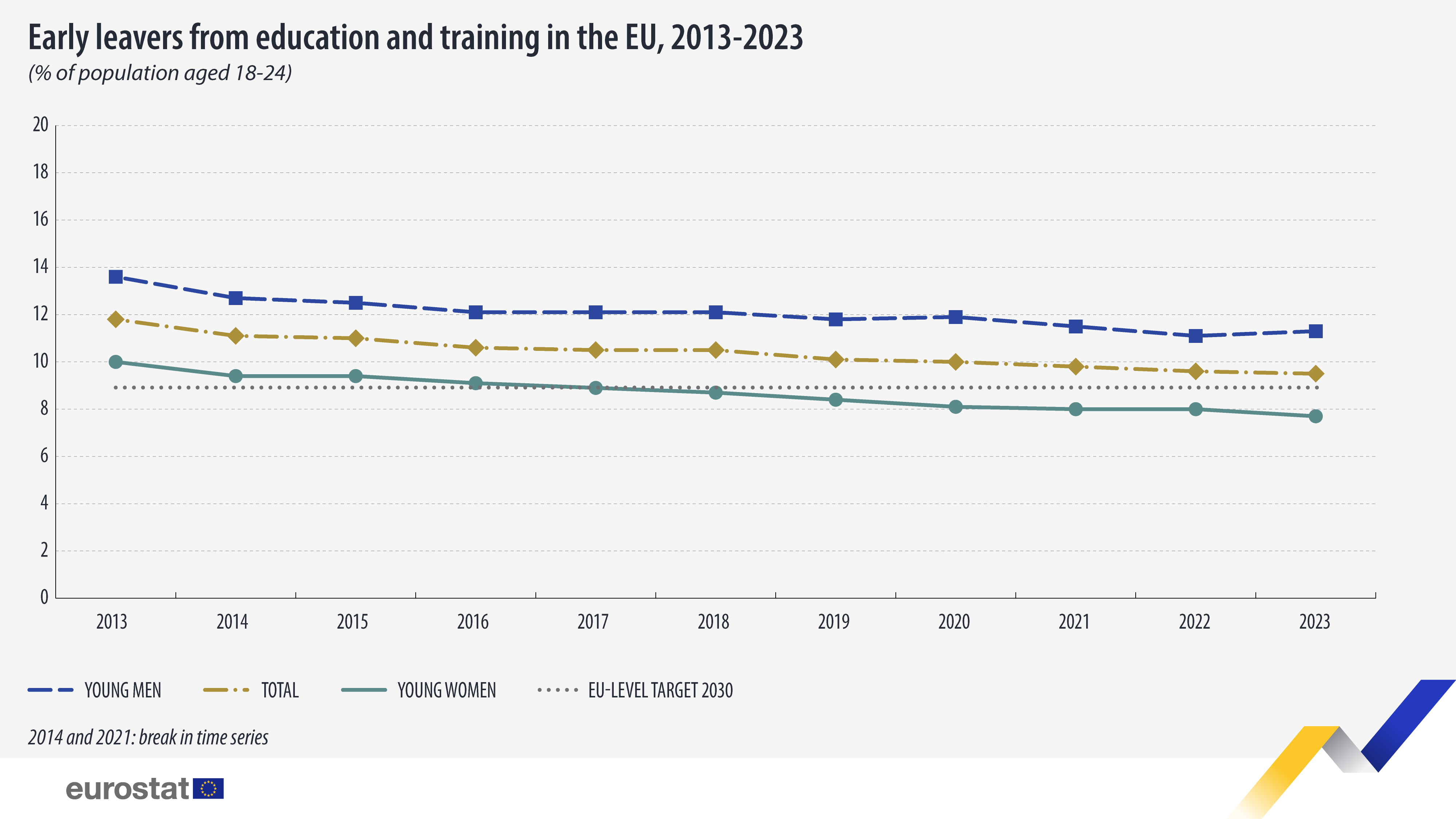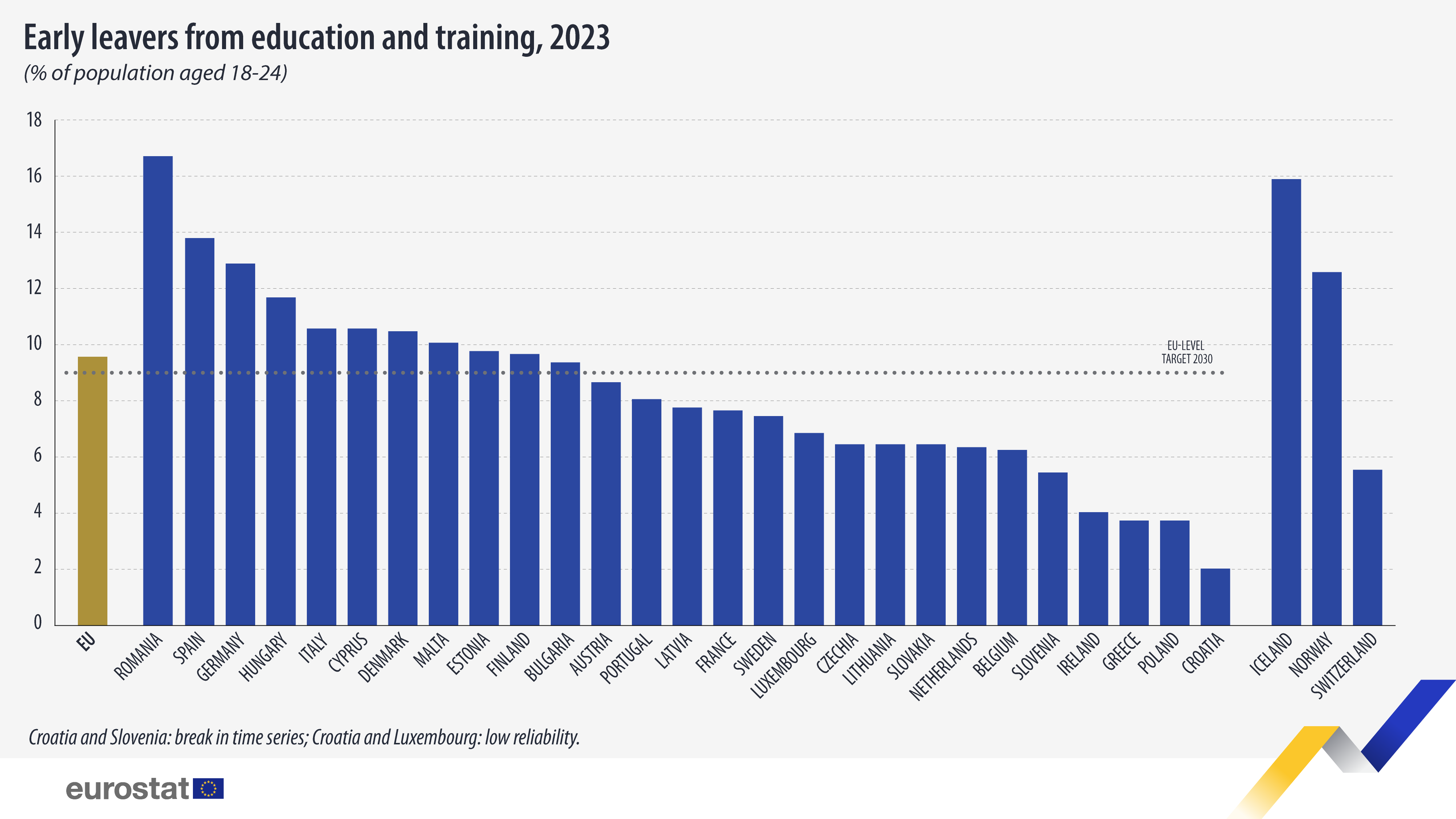Early school leavers down to 9.5% in 2023

In 2023, the share of 'early school leavers' (young people aged 18-24 leaving early from education and training) in the EU was 9.5%. The share has steadily decreased over the last 10 years (from 11.8% in 2013), bringing the EU members closer to the target of reducing the rates of early school leavers to below 9.0% by 2030.
More young men left education and training early than women, 11.3% of men vs 7.7% of women. The share of young men decreased from 13.6% in 2013 to 11.3% in 2023. At the same time, the share of young women fell from 10.0% in 2013 to 7.7% in 2023.
Source dataset: edat_lfse_14
Compared with 2013, 15 EU countries reported a smaller share of early leavers in 2023, with Portugal reporting the highest decrease (-10.9 percentage points (pp)), followed by Spain (-9.9 pp) and Malta (-7.1 pp). Germany recorded the biggest increase (+3.0 pp), followed by Denmark (+2.2 pp) and Slovenia (+1.5 pp).
16 EU countries have met the EU target level
Data show that 16 EU countries have already met the EU-level target of 9.0% for 2030. The lowest shares of early leavers from education and training were recorded in Croatia (2.0%), Poland and Greece (each 3.7%), and Ireland (4.0%).
At the other end of the range, the EU countries that reported the highest shares of early leavers in 2023 were Romania (16.6%), Spain (13.7%), Germany (12.8%), and Hungary (11.6%).
Source dataset: edat_lfse_14
In 2023, the share of early leavers from education and training was lower for young women than for young men in most EU countries. Shares were approximately the same for young women and men in Romania, Czechia, Greece and Bulgaria (±0.2 pp differences).
For more information
- Statistics Explained article on early leavers from education and training
- Thematic section on education and training
- Database on education and training
Methodological notes
- The indicator ‘early leavers from education and training’ is defined as the percentage of the population aged 18-24 with at most a lower secondary education and not in further (formal or non-formal) education or training during the 4 weeks preceding the survey. 'At most lower secondary education' refers to ISCED (International Standard Classification of Education) 2011 level 0-2 for data from 2014 onwards and to ISCED 1997 level 0-3C short for data up to 2013. The change of ISCED has no impact on the comparability over time of this indicator for all EU countries, except Estonia.
- EU-level targets were set by the Strategic framework for European cooperation in education and training towards the European Education Area and beyond.
If you have any queries, please visit our contact us page.


